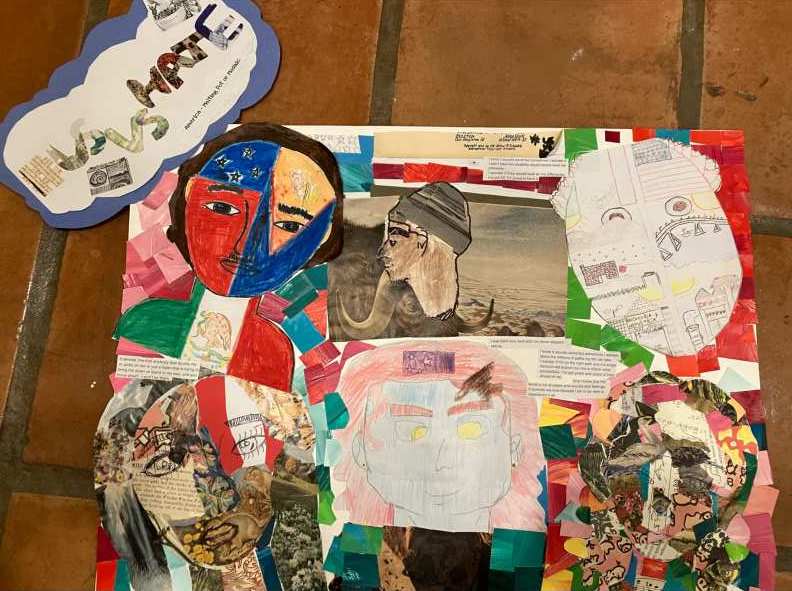The following are the fabulous winners and finalists for the Fall 2024 classic #USvsHate contest! We asked youth, educator, and community voters: Which do you most want amplified in schools and publicly?
In #USvsHate, we define “hate” as any time people denigrate, disrespect or harm an individual or group as if their identity makes them an inferior or less valuable type of person. By amplifying “anti-hate” youth voices in schools and publicly, we seek to empower students to build schools and a society where all belong, feel included, and get supported.
Winners
Irene, Grade 11, Florida
Irena writes: “My message, “Why fix what’s not broken?” simply asks why people are trying to change aspects of themselves to fit into social expectations when they are already perfect being their unique self. My intention was to highlight the effects of social expectations. Because of social expectations, there is more pressure placed on people to “fit in” in society. This leads to people becoming insecure about themselves, changing every aspect of them to meet the expectations. I connect with this art piece because when I was younger, I would try to change myself in order to fit into the expectations that society had set. I’ve grown to learn that social expectations took away from people’s uniqueness and placed unnecessary insecurity on those who are different from the set expectations.”
The teacher explains: “Our sociology class has been examining social inequalities related to social class, gender, race, and ethnicity. Students had the opportunity to research a social issue of interest to them, and in addition to their research, each created an #USvsHate entry to raise awareness about their topic.”
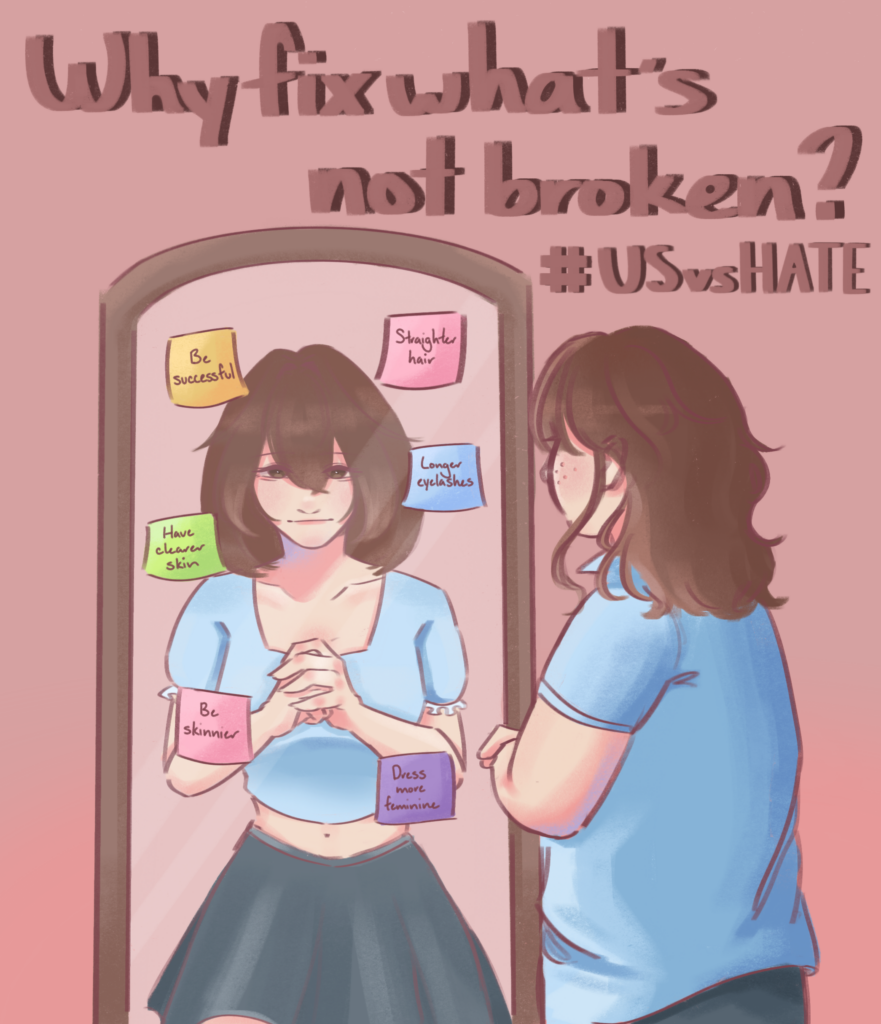
Aliyah, Grade 11, Florida
Aliyah writes: “This poem is about how people’s dislike or judgment for another person can affect society. What can start as one hateful comment, can spread like wildfire, and lead to a lot of tragedy. My intentions are to show the reader that instead of letting things like this happen all over the world, we should find ways to stop spreading prejudice. I have experienced situations where I have been limited to certain spaces or made to feel not welcome for the color of my skin, and these experiences affected the way I thought as I grew up. What someone say can matter greatly to the person their saying it to, especially young children. It’s important to make everyone feel special and comfortable, so they treat themselves and others with the kindness and respect that they deserve.”
The teacher explains: “My Psychology Club engages in discussions about social psychology and issues including self-image, mindfulness, and kindness. It is inspiring to work with students who are passionate about supporting each other’s mental well-being.”
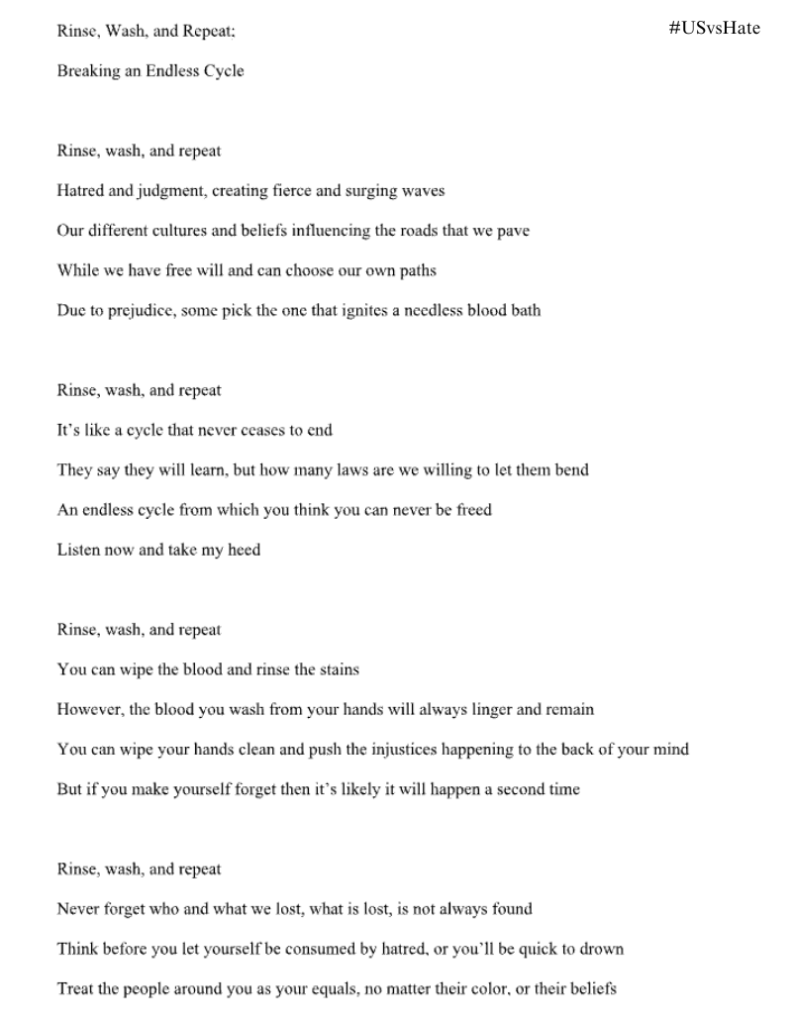
Sully, Grade 10, California
The teacher explains: “My 10th grade AVID classes took some time to learn about Self-Identification and Words that Hurt before taking on the development of messages of their own. The anti-hate messaging varied from promoting acts of kindness to protesting specific current events; this year, we expanded beyond posters and videos and new mediums were introduced inside our classroom, including animation and 3D printed art. It is a class tradition to vote on the top five messages and submit them to the contest.”
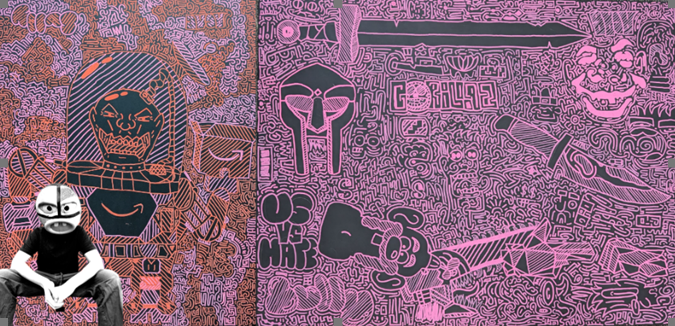
Anonymous, Grade 4, California
Anonymous writes: “We’re all on the same team and need to support each other.”
The teacher explains: “We read Change Sings: A Children’s Anthem, by Amanda Gorman, and discussed the changes we want to inspire in the world. We also went over winning posters and stickers from previous years.”
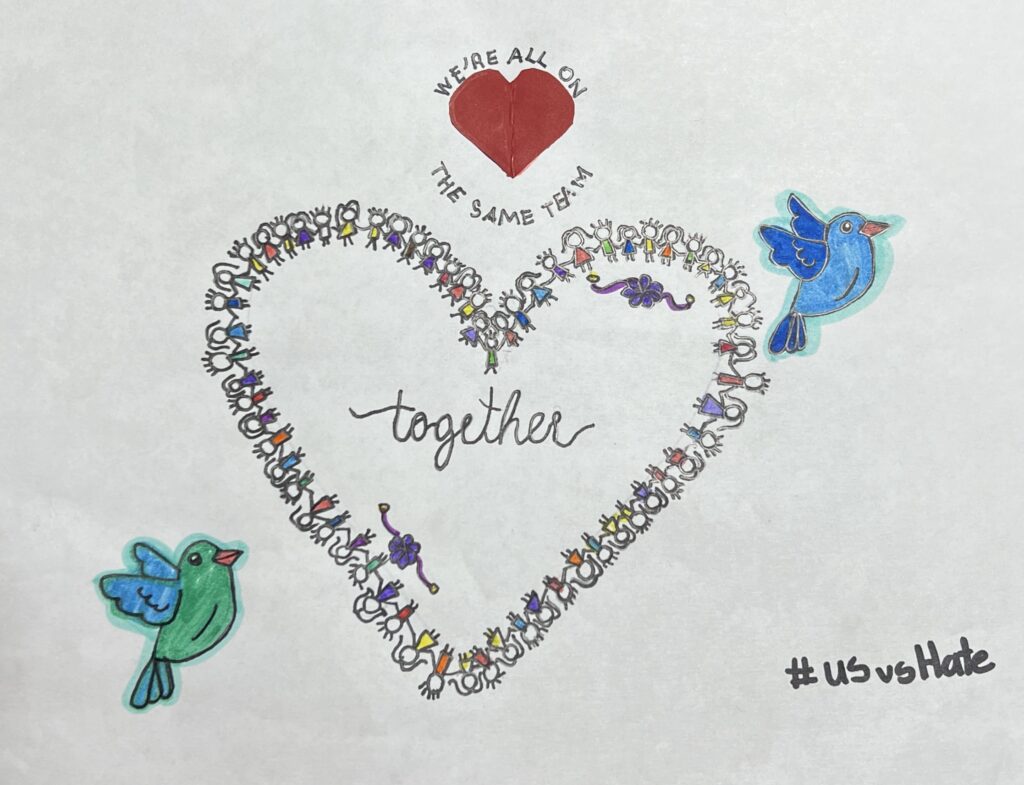
Gina, Grade 8, Seoul, South Korea
Gina writes: “Through my drawing, I hope that it conveys the world’s need to cease the bias of LGBTQ+ and rather than it, to assemble a ravishing community. The chains wrapped around one’s hands express that LGBTQ people’s rights are being suppressed, thus the background is of people protesting since they are not being recognized for their rights as human beings. We speak more than a million or even a trillion words per day, and every single word has value and dominion over others; which power of every individual should be upraised and heard. The word “prejudice” stands out in the center, symbolizing the acts of setting free from restrictions or oppression that are usually tied to liberation. Perpetuating division should prevent people from fostering conflicts through biases and where anyone is standing should not have prejudiced standards by their own character. By manifesting empathy and understanding, we can establish a society with mutual respect, where diversity is valued as an asset rather than a source of division.”
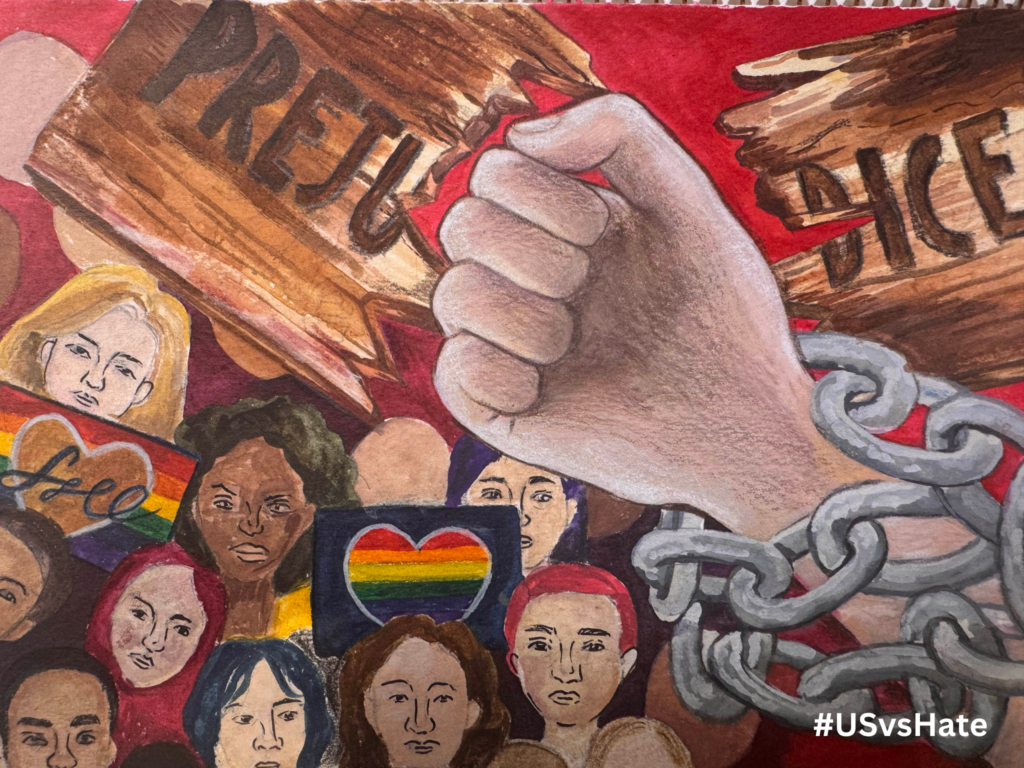
Finalists
Feryal, Grade 11, Florida
Feryal writes: “The message of my project is the fear of police brutality. My intentions are to bring awareness to the crime that is brushed off and show light to the broken justice system. As a girl of color who has dealt with cops getting called on me since I was waiting for my mom to pick me up from a Starbucks since I didn’t buy anything, I understand what it’s like to be quickly judged.”
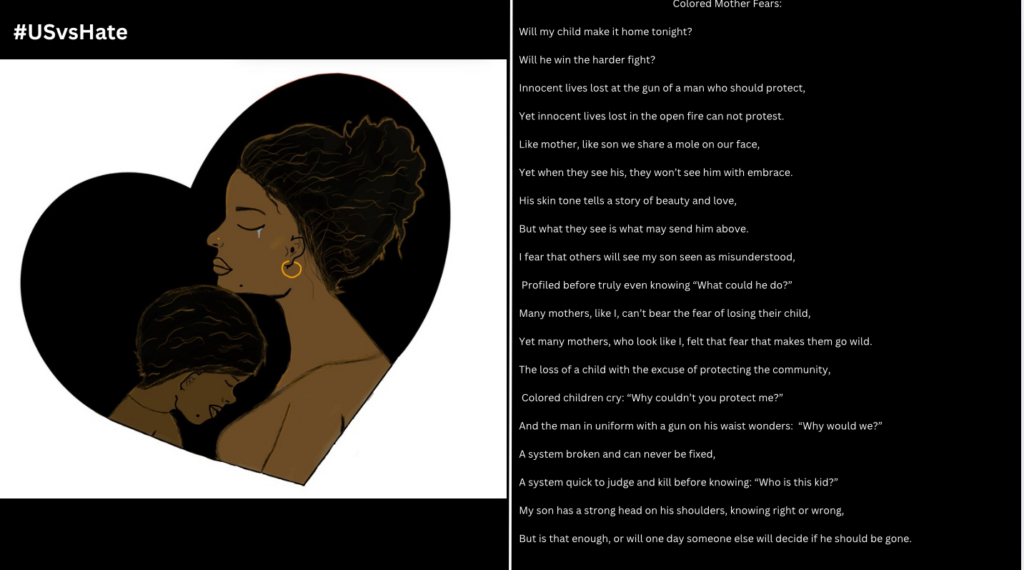
Harper, Grade 11, Texas
Harper writes: “I joined USvsHate to show that life is beautiful and short and spending it hating others is a waste. My painting is of colorful mountains to represent the diversity of life and the beauty of the individual.”
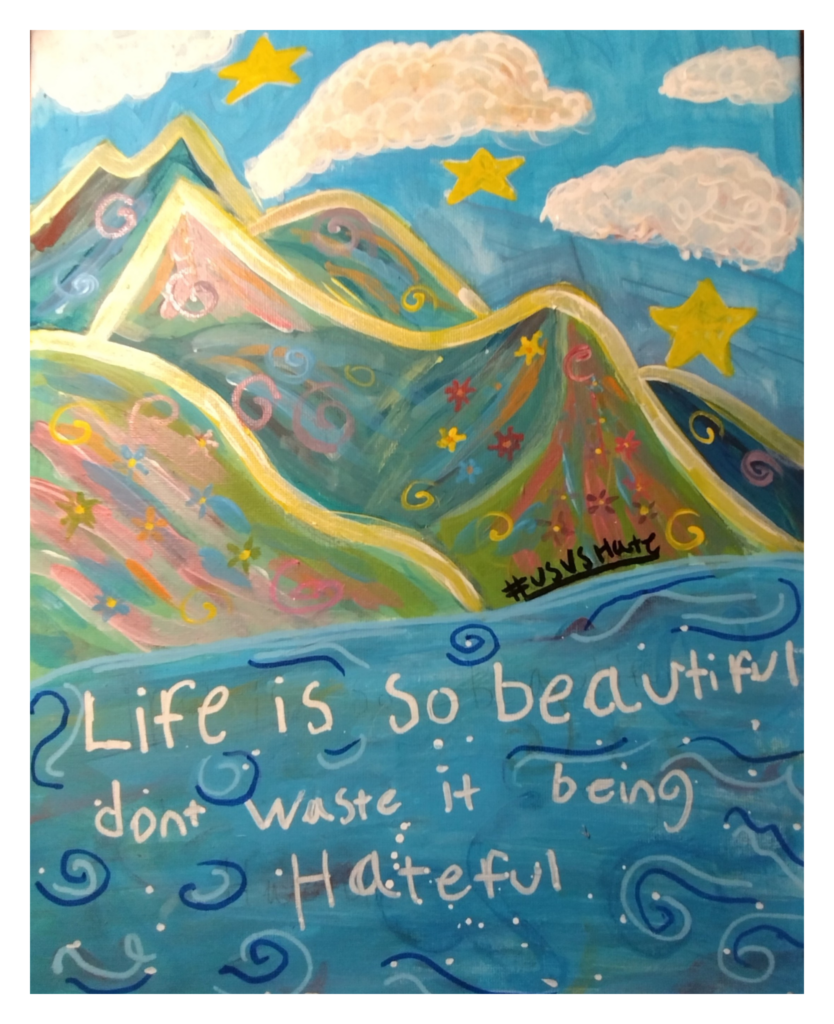
Gabby, Grade 7, California
Gabby writes: “My poster was about how even though everyone is different, love is universal. Martin Luther King Jr. said “ darkness cannot drive out darkness, only light can do that. Hate cannot drive out hate, only love can do that.” And my work is in a way a tribute to that.”
The teacher writes: “For many years I have been teaching my middle school students to recognize and name the ways we categorize ourselves and others. Through a variety of lessons, videos, readings, and discussions, they learn about race, ethnicity, and especially the structure of caste and the harms it has led to throughout history like the Rwandan genocide, South African apartheid, the Holocaust, and American slavery and the Jim Crow era. They use their knowledge to build awareness of their own implicit biases, see past stereotypes, and speak out against the prejudice and hate in their communities.”
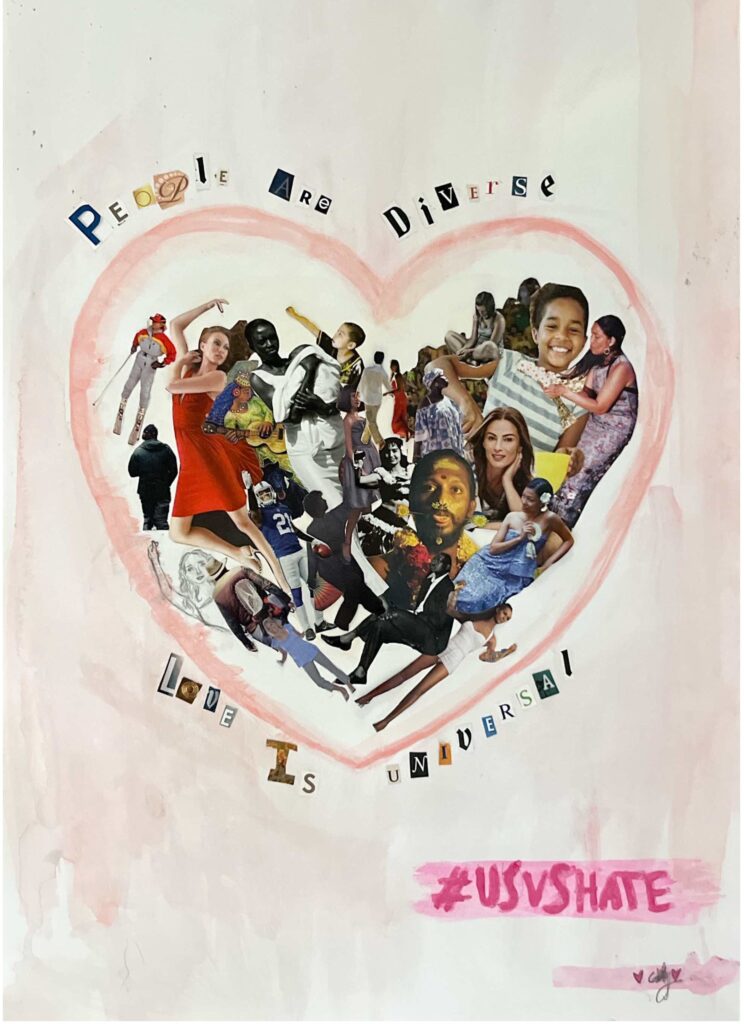
Conversation Starters
Conversation starters are #USvsHate messages that can be used to spark dialogue in classrooms and school communities. They can be messages that challenge us or inspire us. By amplifying “anti-hate” youth voices in schools and publicly, we seek to empower students to build schools and a society where all belong, feel included, and get supported.
Anonymous, Grade 10, New York
Message Translation: “There are those who see me as weak for being an immigrant but to emigrate you have to be strong.”
Ask: What does the message mean? What story is being told through the images? What do the drawing and message convey together?
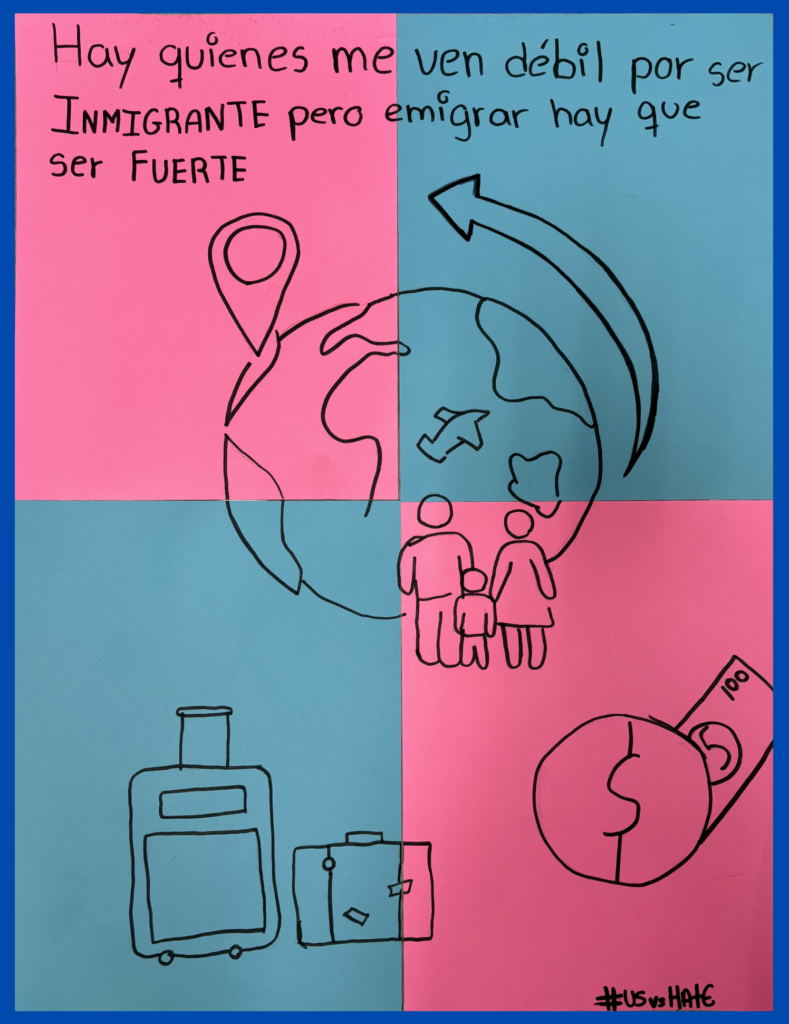
Anonymous, Grade 10, New York
Ask: Why are people afraid of things and people who are unfamiliar? How might we combat these fears? What can we do to help stop discrimination against people who are different from us?
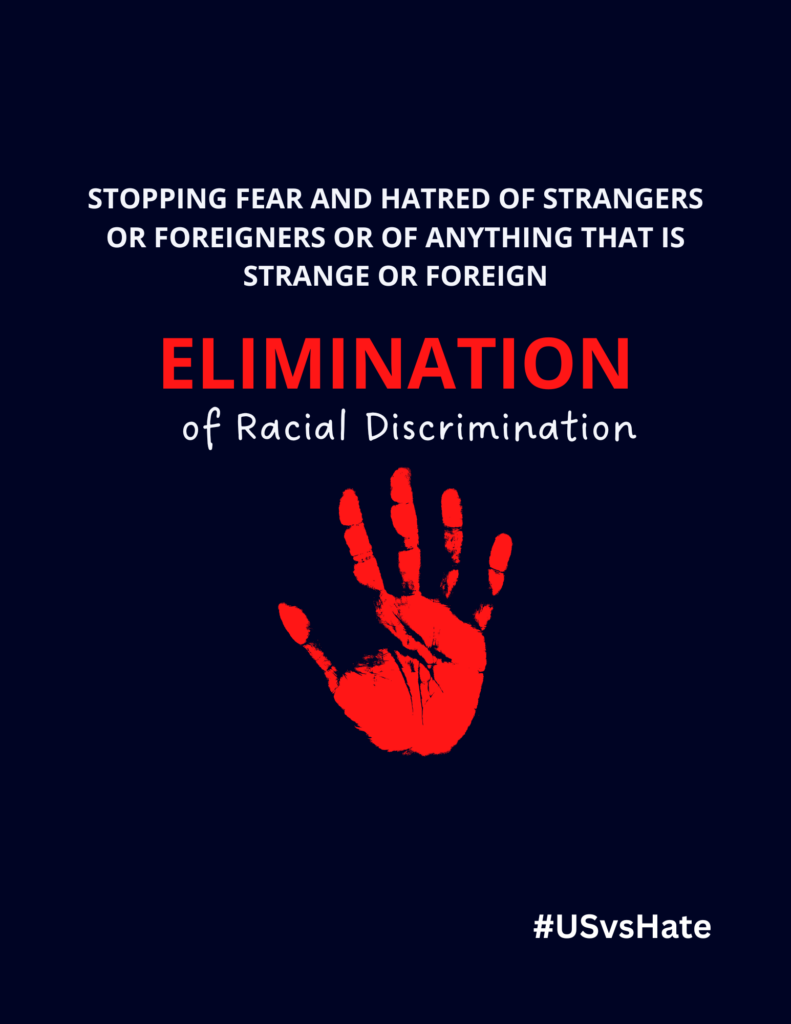
Kareem and Charlie, Grade 8, California
Kareem and Charlie explain: “I am Muslim, and after 9/11 especially Muslims have been given somewhat of a bad rap. People fear Muslims, calling us terrorists, and I wanted to combat that stereotype. I worked with my friend, who wanted the same thing, to create a poster that tells us to look past the stereotypes and see Muslims for who we are, not what political figures want you to see. That is why we created a poster that tells us to not use society’s definition of Muslims, but to define us as humans, too.”
Ask: How do stereotypes impact our ability to see people as individuals? Why is it important for us to see all people as humans? Why do you think the artists included the images used?

Beccamarie, Grade 7, California
Beccamarie explains: “The backstory to my poster is that we never know what someone’s been through or what their story is like. Before we assume, we should ask.”
Ask: What are internal thoughts vs external attitudes? Why is getting to know someone powerful? Why are we quick to judge someone before we get to know them?

Avery, Laura, and Mabel, Grade 8, California
Avery, Laura, and Mabel explain: “During class this semester we learned a lot about how stereotypes can affect how we as people can view other people around us, so we decided to incorporate that into our poster. Our quote helps us see how we don’t have to look at people just through stereotypes and that it is important to see people without judging them.”
Ask: What are stereotypes? Do you hold any stereotypes about other people? Do you ever feel like people stereotype you? How do stereotypes impact our ability to see people as individuals?
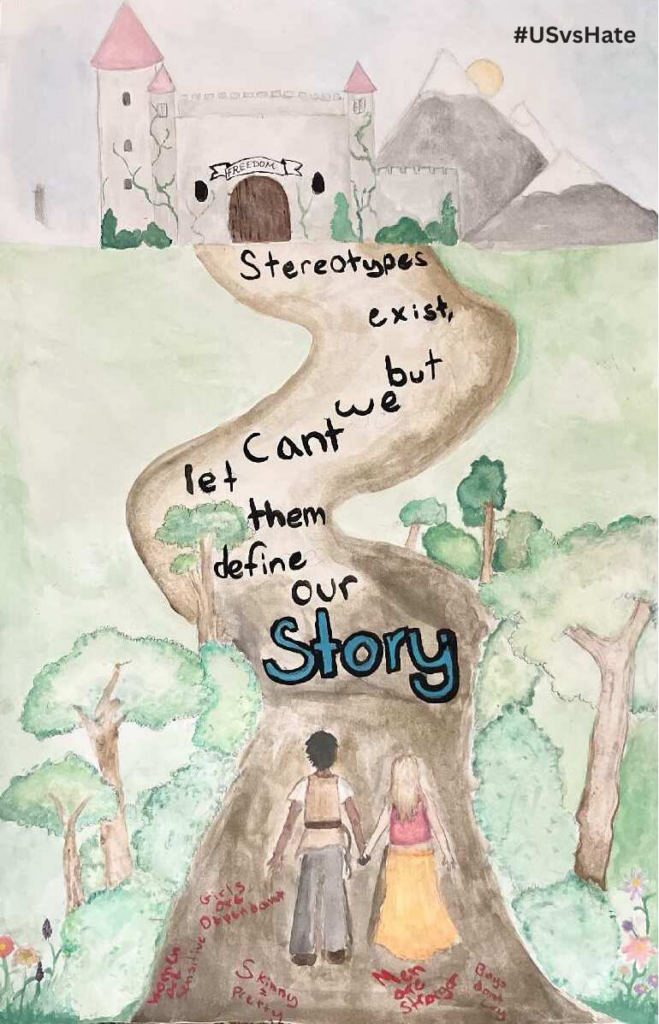
Ethnic Studies Class, Grade 12,California
Class Backstory: “We are a very small but very joyfully diverse class that celebrates and embraces our identities: racial, ethnic, language, and disability identities. In our one class, we identify as African-American, BlAsian, Peruvian, Mexican, Samoan, children of immigrants, and wheelchair users — class as a microcosm of our school, and our school is a microcosm of our beautiful world. We explored the 19th century ideal of the US as a melting pot and decided we preferred the 21st century ideal of a mosaic, celebrating our varied identities as proud Americans.”
Ask: What does it mean to be joyfully diverse? What is a microcosm? What is the difference between a melting pot and a mosaic? How does your class celebrate your varied identities?
